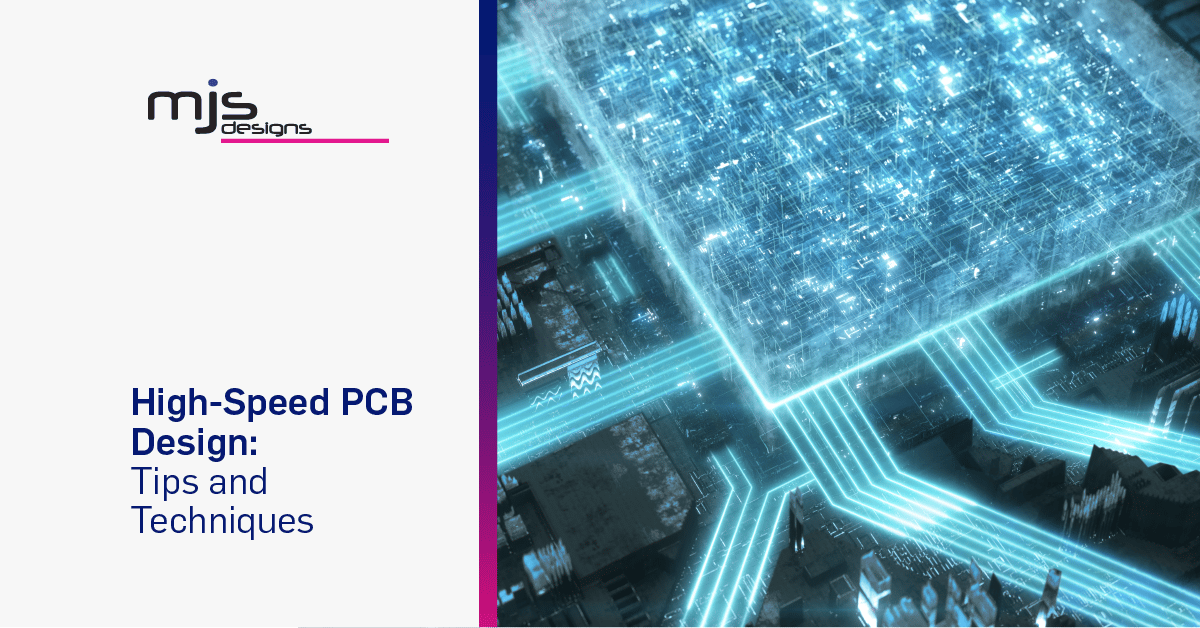As the demand for faster and more complex electronic devices continues to grow, the importance of high-speed printed circuit board (PCB) design becomes increasingly clear. High-speed PCBs are used in a variety of applications, including telecommunications, data storage, and high-performance computing, to name a few.
Designing a high-speed PCB requires a different set of considerations than a traditional PCB, as the higher speeds and signal frequencies involved introduce new challenges such as signal integrity, power integrity, and specifically, crosstalk. In this blog, we will cover some key considerations and techniques utilized with designing high-speed PCBs.
Signal Integrity
Signal integrity refers to the quality of the signal as it travels through the PCB and components. At high speeds and frequencies, the signal can be affected by factors such as reflections, crosstalk, and impedance mismatches, which can lead to signal degradation and potential errors.
To minimize signal integrity problems, follow these best practices:
- Use controlled impedance traces: These traces have a specific impedance that is matched to the transmission line impedance of the signal. This helps to minimize reflections and maintain the integrity of the signal.
- Minimize trace lengths: Shorter traces reduce the likelihood of signal degradation and minimize the impact of parasitics (inductive and capacitive effects that can affect the signal).
- Use proper trace routing techniques: These techniques include using vias appropriately, avoiding sharp turns, appropriate signal layer arrangement in a stack-up, and maintaining a consistent trace width can help to minimize the impact of parasitics and improve signal integrity.
Power Integrity
Power integrity refers to the quality and reliability of the power delivery system on the PCB. At high speeds and frequencies, the power supply can become a source of noise and interfere with signals.
To reduce power integrity issues, follow these best practices:
- Use acceptable layout techniques for decoupling capacitors: These should be placed as close as possible to the power pins of the components to minimize the impact of power supply noise on the signal. The routing of the decoupling capacitors should be kept short and wide with vias suitably placed.
- Carefully arrange Power and Ground planes in a stack-up: A power plane placed adjacent to a ground plane provides a stable voltage reference, has greater current carrying capacity, decreases voltage drop, improves heat dissipation, has a short return path, and provides better decoupling. A ground plane provides a low-impedance return for voltages and signals, reduces EMI (Electro Magnetic Interference), and minimizes noise.
Crosstalk
Crosstalk is a signal integrity phenomenon where the electromagnetic field of an aggressor signal in one trace affects a victim signal in a neighboring trace, leading to noise and potential errors. Crosstalk is more likely to occur at high speeds and frequencies, so it is important to take steps to minimize it.
To reduce crosstalk, follow these best practices:
- Use a ground plane close to the high-speed layer: This helps to shield the signal traces from crosstalk by providing a continuous reference plane for the signal which helps control the electromagnetic field of the aggressor signal.
- Keep high-speed signals away from other signals: High-speed signals can interfere with or be interfered by other signals, so it is important to use proper spacing in order to keep them separated as much as possible.
Conclusion
Designing a high-speed PCB requires a different set of considerations than a traditional PCB. By understanding the challenges of signal integrity, power integrity, and crosstalk following best practices such as controlled impedance traces, minimal trace lengths, use of acceptable trace routing, proper decoupling capacitor layout, careful arrangement of the planes in a stack-up, and spacing for signals, you can ensure that your high-speed PCB is reliable and performs at the highest speeds and frequencies.
Keep in mind that high-speed PCB design is a complex and evolving field, and there is always more to learn and new techniques to explore. Whether you are a beginner or an experienced printed circuit board design services company, staying up-to-date on the latest trends and developments in high-speed design is crucial to delivering top-quality products.
MJS Designs has over 45 years of experience and a reputation for quality PCB design services. Our design team regularly attends conferences, workshops, and classes to maintain an in-depth knowledge of the latest industry standards for our clients. To learn more about the PCB layout services we offer to bring your project to life, please click the link here.

